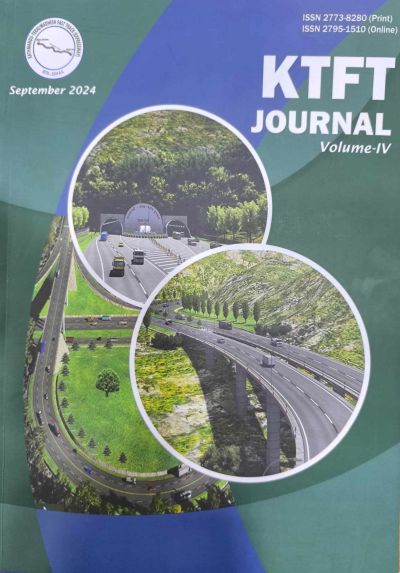Evaluating Traffic Dispersal to and from Kathmandu Terai Fast Track Expressway within Kathmandu Valley's Road Network
DOI:
https://doi.org/10.3126/ktftj.v4i1.70414Keywords:
origin-destination, traffic assignment, volume-to-capacity (v/c) ratioAbstract
The Kathmandu Terai Fast Track (KTFT) Expressway aims to bolster connectivity between Kathmandu valley and Nepal’s Terai region. Despite its potential benefits in enhancing economic development and accessibility, the project poses challenges due to the existing poor road network and traffic congestion in Kathmandu valley. This study assigns projected KTFT traffic to and from the road network in Kathmandu valley based on detailed origin-destination information. It discusses potential transport infrastructure interventions to facilitate traffic dispersion and analyses link performance using flow and volume-to-capacity (v/c) ratios with and without such interventions for the projected traffic in the next three decades. Assignment results indicated potential heavy congestion in the western area of the valley road network, particularly along Dakshinkali road, Khokana-Nakkhu Road, Kalanki-Gongabu Road and Kalanki-Thankot Road in the coming decades. Improvements of the Dakshinkali road, corridor roads and links to Thankot and Nakkhu along with addition of a tunnel in Chobhar area showed significant improvement in the performance of the network links.




